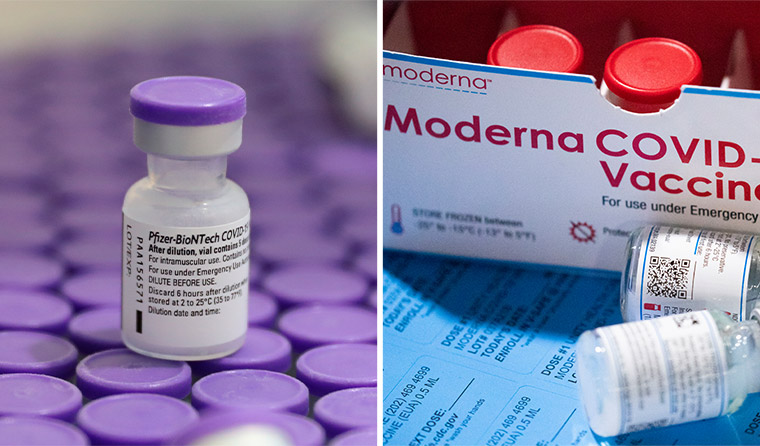News
TGA releases updated COVID booster safety data
Swollen lymph nodes have been the most commonly reported adverse effect to emerge from Australia’s booster program.
 Data suggest swollen lymph nodes will occur more frequently after Pfizer and Moderna boosters than after either the first or second doses. (Images: AAP)
Data suggest swollen lymph nodes will occur more frequently after Pfizer and Moderna boosters than after either the first or second doses. (Images: AAP)
Approximately 600 adverse reports have been submitted in relation to around 2.5 million booster doses administered in Australia up to 2 January, according to the Therapeutic Goods Administration (TGA).
The regulator’s most recent COVID-19 vaccine weekly safety report indicates that the type of side effects associated with boosters is not expected to be different to first and second doses of either the Pfizer or Moderna vaccines.
However, the results of clinical trials and observations from regulators overseas, where more booster doses have been given, suggest swollen lymph nodes will occur more frequently after boosters than after either the first or second doses, where it affected less than 1% of people.
The TGA expects around 5% of third-dose Pfizer recipients and up to 10% of Moderna recipients will experience this reaction.
The report did not reference any instances of myocarditis or pericarditis occurring in those who have received boosters so far.
According to the Australian Technical Advisory Group on Immunisation (ATAGI), early observational data from Israel shows that a lower rate of myocarditis and pericarditis was reported after a booster dose of the Pfizer vaccine than after the second dose of the Pfizer primary course.
But there is not yet sufficient data to establish rates of myocarditis or pericarditis specifically after a booster dose of Moderna.
Updated Pfizer product information
The product information for Pfizer has been updated to include the potential adverse events erythema multiforme (a type of allergic skin rash), paraesthesia and hypoaesthesia (tingling and numbness of the skin). These events were reportedly not observed in clinical trials but have been reported during post-market surveillance.
‘Erythema multiforme may appear on the hands [especially the palms] or feet before spreading to other areas,’ the TGA states.
‘The rash is characterised by small round spots that are darker at the centre than the edges. This condition usually resolves on its own, but treatment may be needed for more severe cases.’
Only five cases of suspected erythema multiforme were reported to the TGA up to 2 January.
Meanwhile, paraesthesia (an unusual feeling in the skin, such as tingling or a crawling sensation) and hypoaesthesia (a decreased feeling or sensitivity) have been reported to the TGA for each of the COVID-19 vaccines and are mentioned in about 9% of all reports relating to the Pfizer vaccine.
It is not known why paraesthesia and hypoaesthesia sometimes occur after vaccination, but the TGA suggests they are usually mild and may be a stress-related response to immunisation rather than an immune reaction.
Myocarditis and pericarditis
Rates of myocarditis and pericarditis continue to slightly increase, particularly among young boys and adolescents following a second dose of the Moderna vaccine.
While the overall rate for Moderna is very rare at fewer than 2.2 cases per 100,000 doses, this increases to 16.8 cases per 100,000 second doses in boys aged 12–17. For Pfizer, the rate is 11.8 cases per 100,000 second doses in this cohort.
Analysis conducted by the TGA found that about half of all patients with suspected myocarditis were admitted to hospital, while five with confirmed myocarditis were treated in intensive care.
The ICU admissions represented about 1% of all confirmed myocarditis cases to date, and most patients admitted to hospital were discharged within four days.
Overall, there have been 456 confirmed cases of myocarditis that occurred following vaccination with either Pfizer or Moderna from more than 29 million doses, including 125 adolescents aged 12–17.
Log in below to join the conversation.
boosters Moderna myocarditis Pfizer TGA
newsGP weekly poll
How often do patients ask you about weight-loss medications such as semaglutide or tirzepatide?